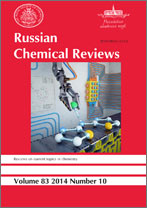|
This article is cited in 8 scientific papers (total in 8 papers)
Nano-biohybrid structures based on the organized films of photosensitive membrane proteins
S. Yu. Zaitsevab, D. O. Solovyevaab, I. R. Nabievbc
a K.I. Skryabin Moscow State Academy of Veterinary Medicine and Biotechnology
b National Engineering Physics Institute "MEPhI", Moscow
c Institute of Molecular Medicine,Trinity College
Abstract:
The fundamental principles and technologies for engineering of stable film systems based on biomembranes, photosensitive membrane proteins and complexes (retinal-containing proteins, reaction centres of photosynthetic bacteria, light-harvesting complexes of photosystems I and II), including their associates with metal and metal oxide nanoparticles or quantum dots are described. The advantages of controlled incorporation of the semiconductor or plasmonic nanocrystals into the biohybrid film structures are analyzed, first of all, the increase in the wavelength range of solar light harvesting and effective transfer of collected energy to the biological chromophores. Particular attention is devoted to the production of ultrathin and highly organized films at interfaces as the key stage of the design of nano-biohybrid materials with particular properties for photovoltaics, optoelectronics and nanophotonics.
Bibliography — 182 references.
Received: 12.03.2013
Citation:
S. Yu. Zaitsev, D. O. Solovyeva, I. R. Nabiev, “Nano-biohybrid structures based on the organized films of photosensitive membrane proteins”, Usp. Khim., 83:1 (2014), 38–81; Russian Chem. Reviews, 83:1 (2014), 38–81
Linking options:
https://www.mathnet.ru/eng/rcr681https://doi.org/10.1070/RC2014v083n01ABEH004372 https://www.mathnet.ru/eng/rcr/v83/i1/p38
|


| Statistics & downloads: |
| Abstract page: | 479 |
|





 Contact us:
Contact us: Terms of Use
Terms of Use
 Registration to the website
Registration to the website Logotypes
Logotypes








 Citation in format
Citation in format 
